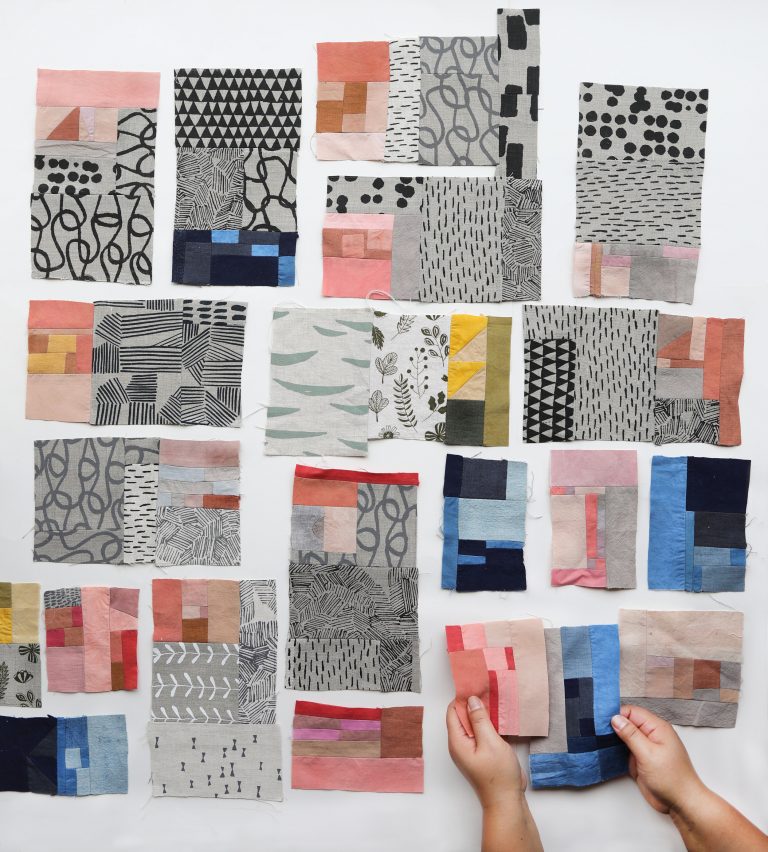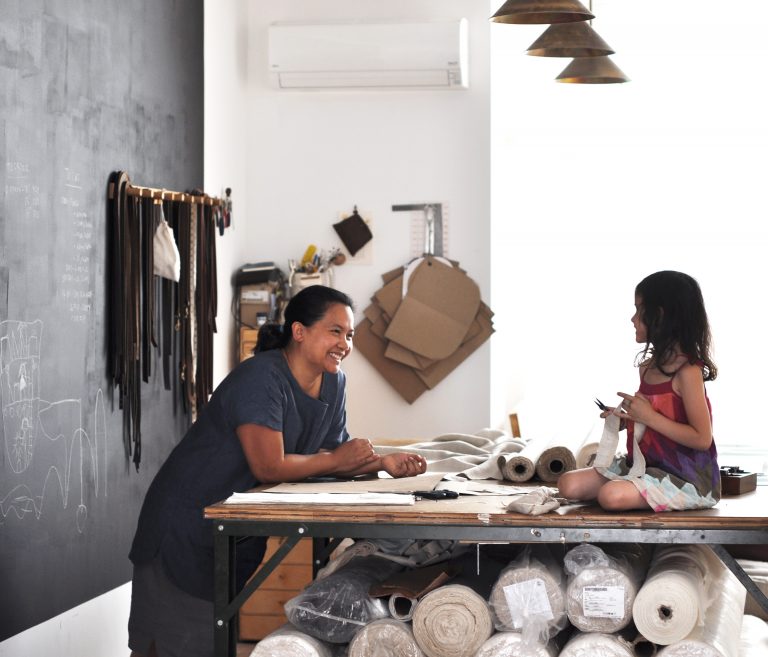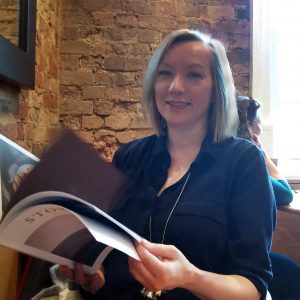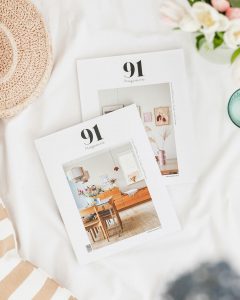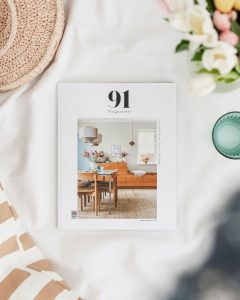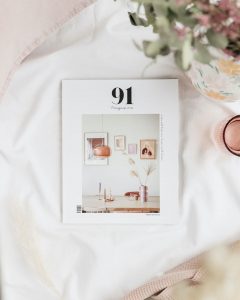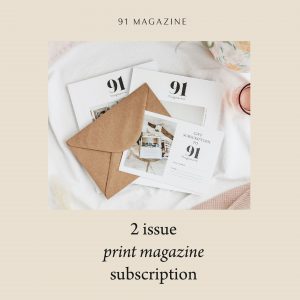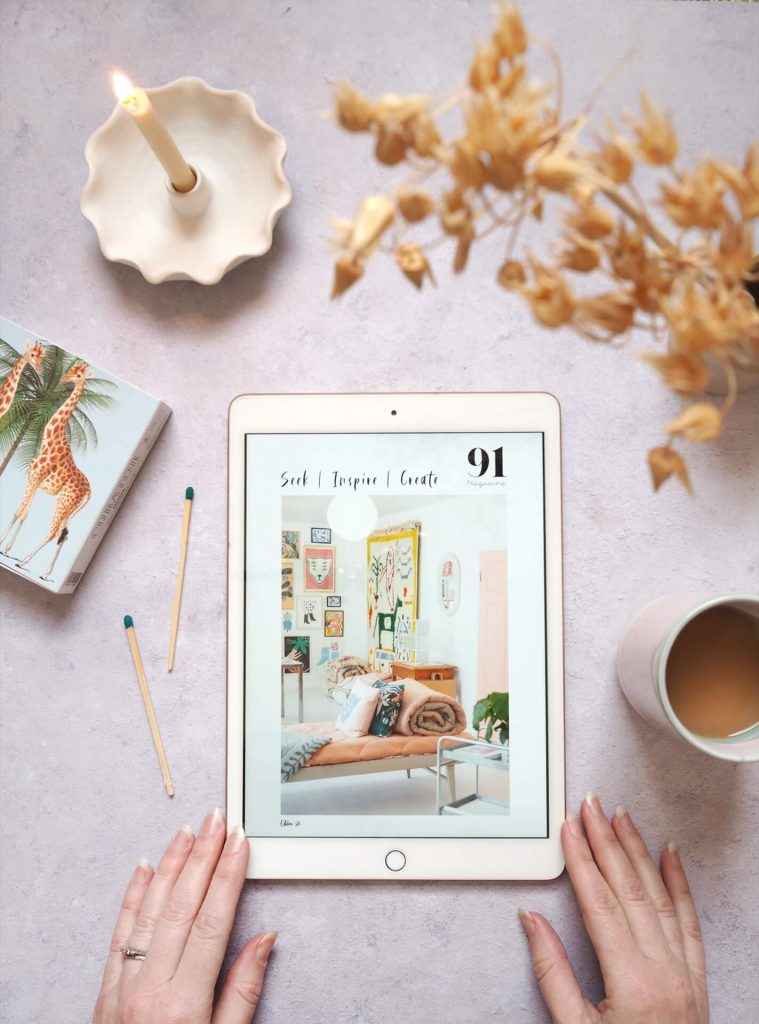Producing work with an emphasis on natural handmade materials and small production, in 2008 the couple opened their bricks and mortar shop in Toronto, and run an online store, too. We talk to Arounna to discover more about bookhou’s work…
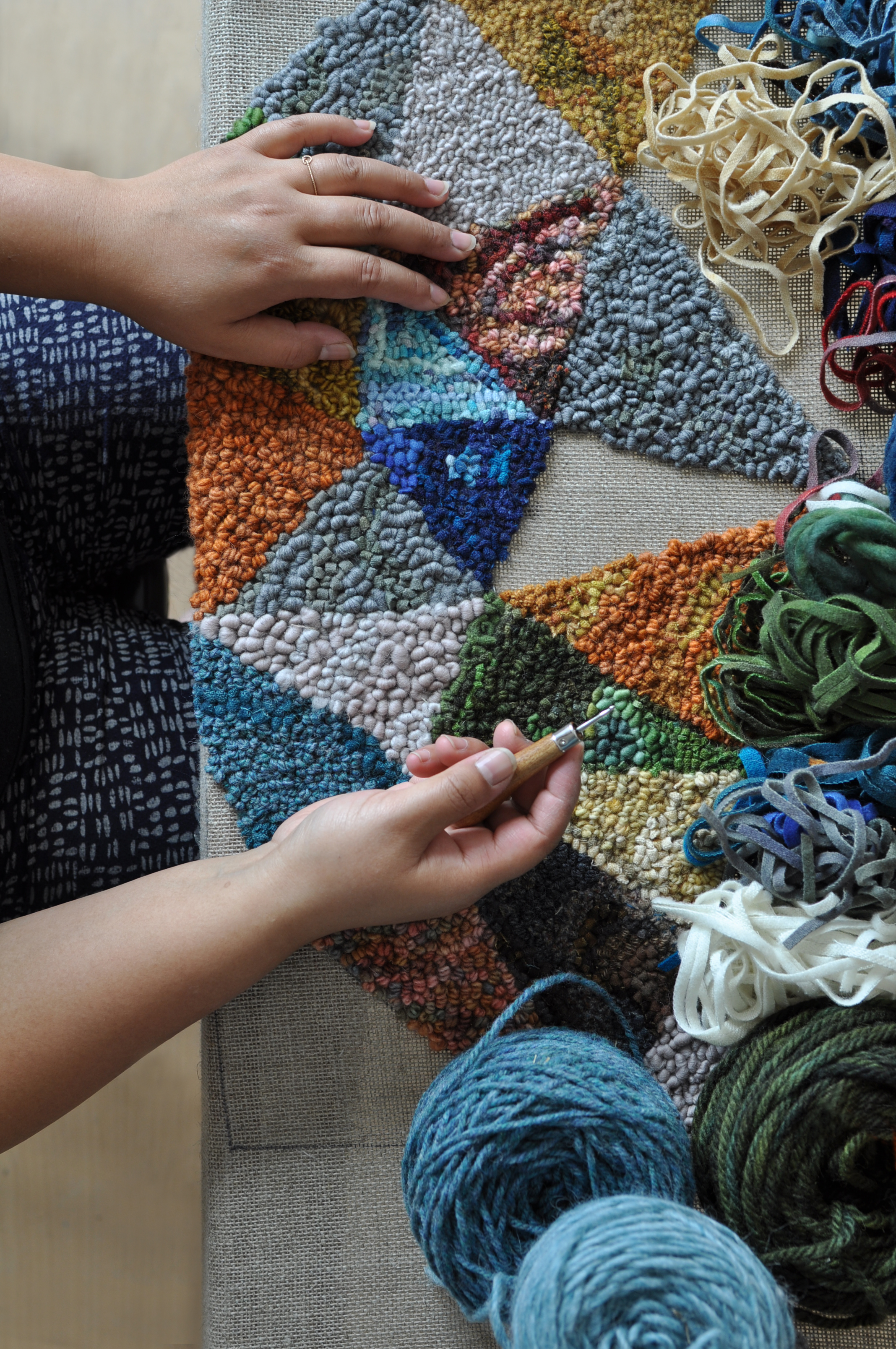
How would you describe bookhou, in a nutshell?
bookhou is as a multidisciplinary studio making a variety of decorative items such as furniture, fabric bags and home items with an emphasis on handmade.
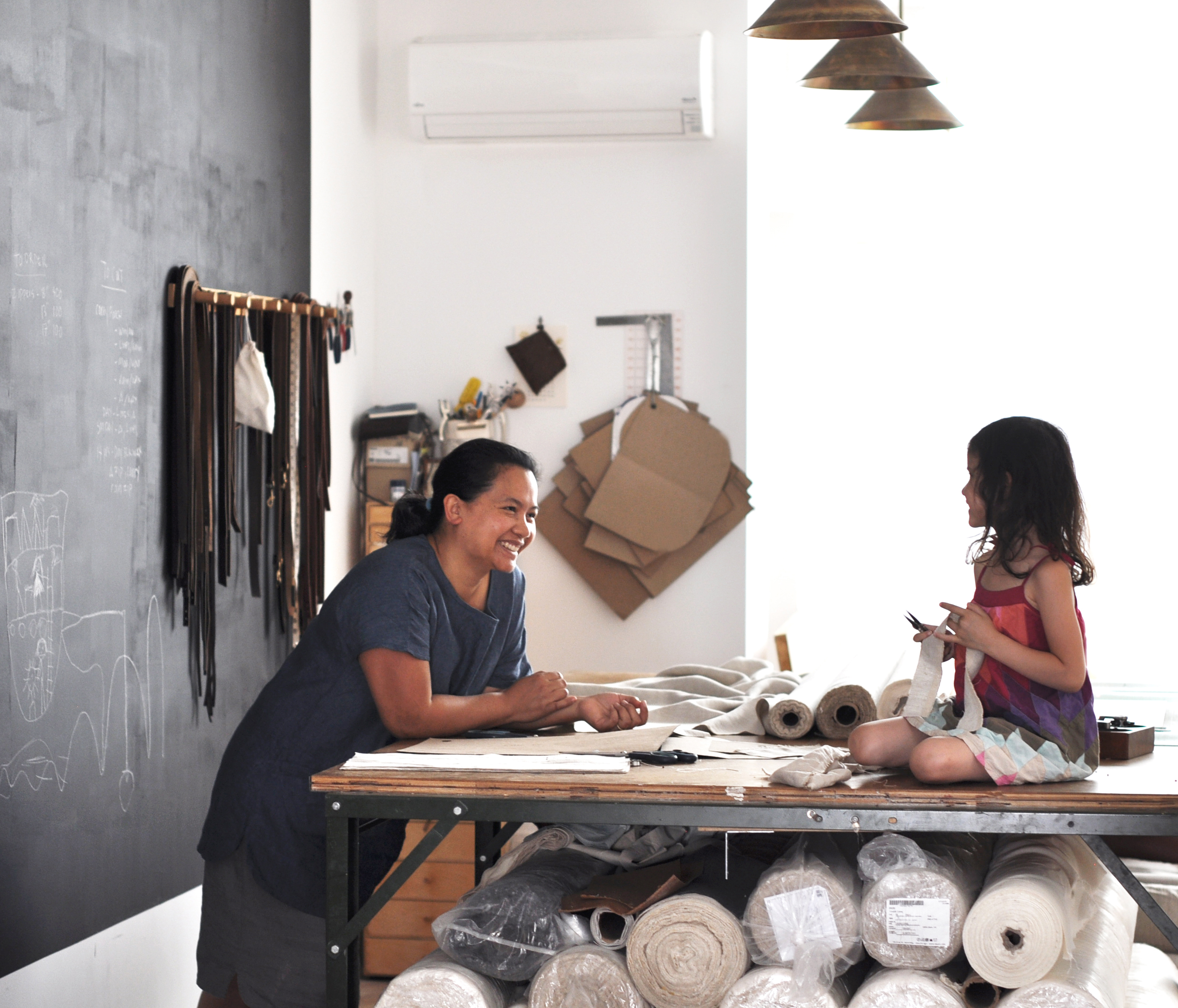
What inspired the idea of setting up your business?
John and I were always makers and designers and although there were differences in our chosen materials and approaches, it also seemed that our work really complimented each other. So, from the onset, we knew that bookhou would be a place to develop our individual work but also contribute and combine our ideas in a number of collaborative projects. Because we both have such a diverse interest in art and design we purposely worked with a variety of materials and processes from fabric, paper, wood, to anything else that came our way. Eventually, as we gained more of an audience for our work some things developed further, but still we try to keep working in a variety of directions.
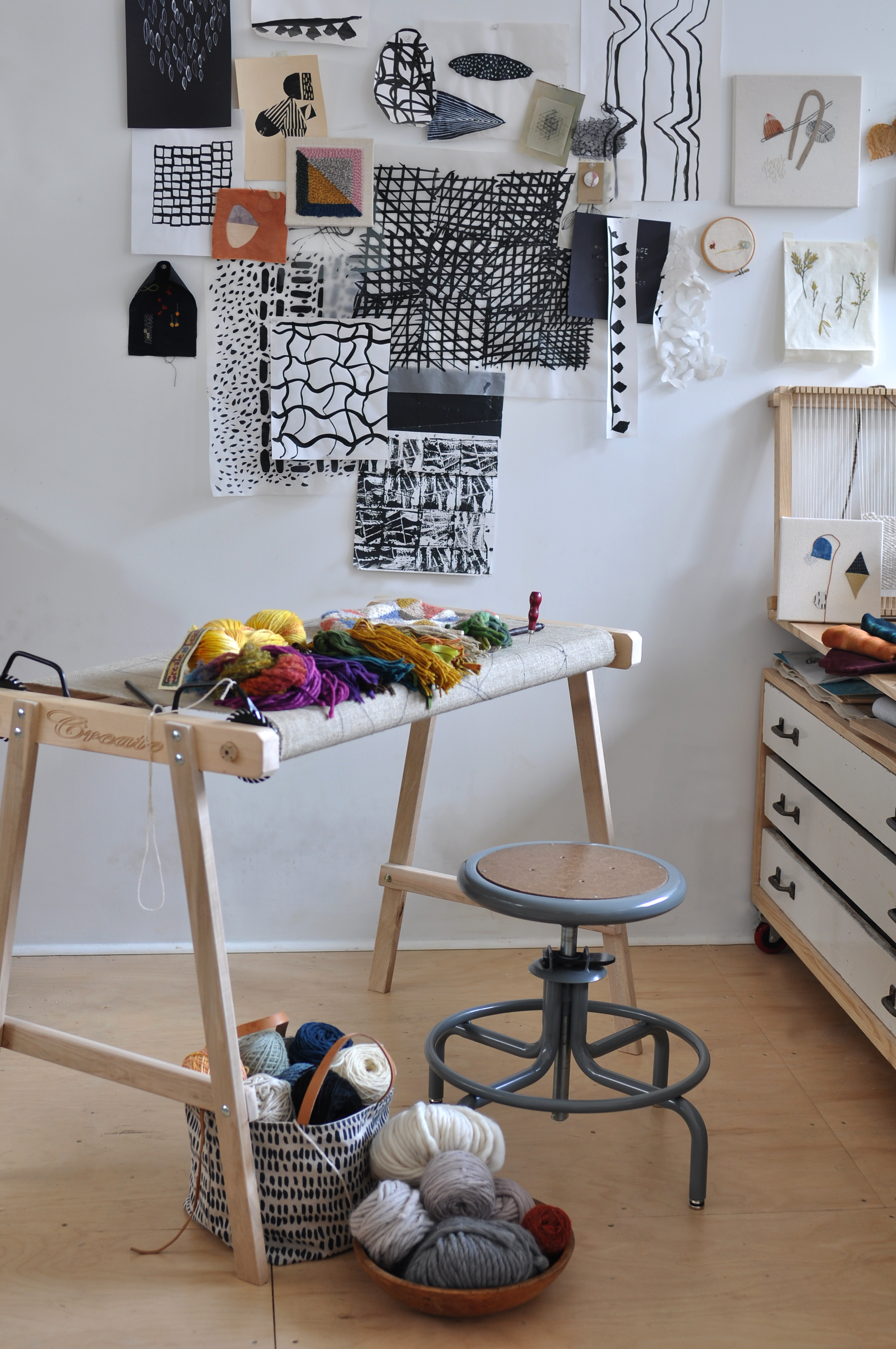
What did you both do before setting up bookhou?
We both have degrees in fine art. John also has a degree in architecture. We met while working in education – I was teaching at universities when we began our studio work together and eventually decided to run our business full-time.
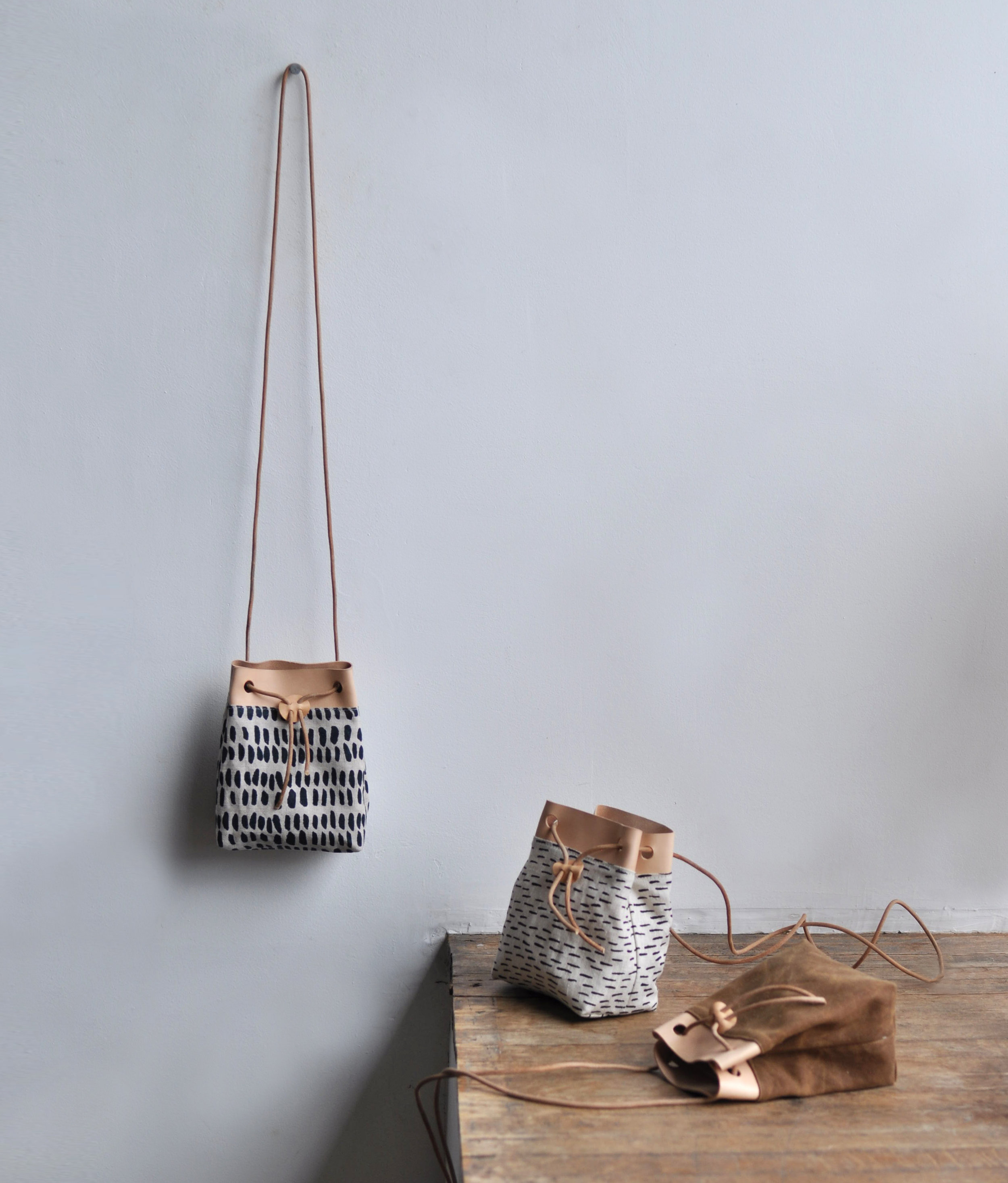
How would you describe your style?
Although I work in both abstract and figurative ways I think my style is simple and minimal, with an emphasis on natural materials.
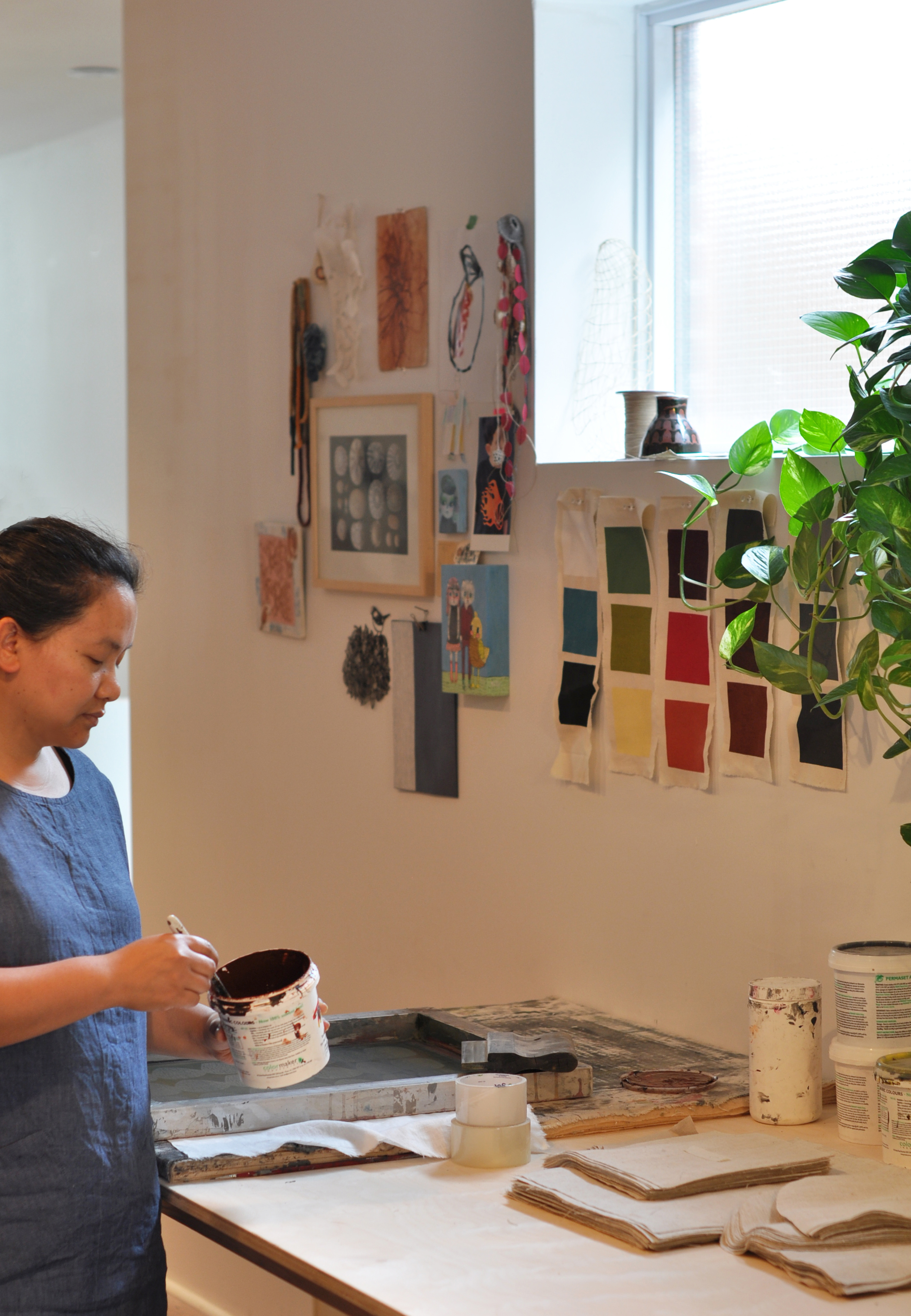
What is the ethos behind bookhou?
We want to make utilitarian objects that reflect both the art and design aspects of our backgrounds. No matter how simple the idea, we always try to emphasise the beauty of the materials we use and the importance of form, pattern and structure. And because we believe in thinking with our hands we’ve always made virtually everything in-house at our Toronto studio. That allows us to keep our connection with our work in all ways and lets our projects cross-pollinate in ways that would otherwise be difficult to predict.
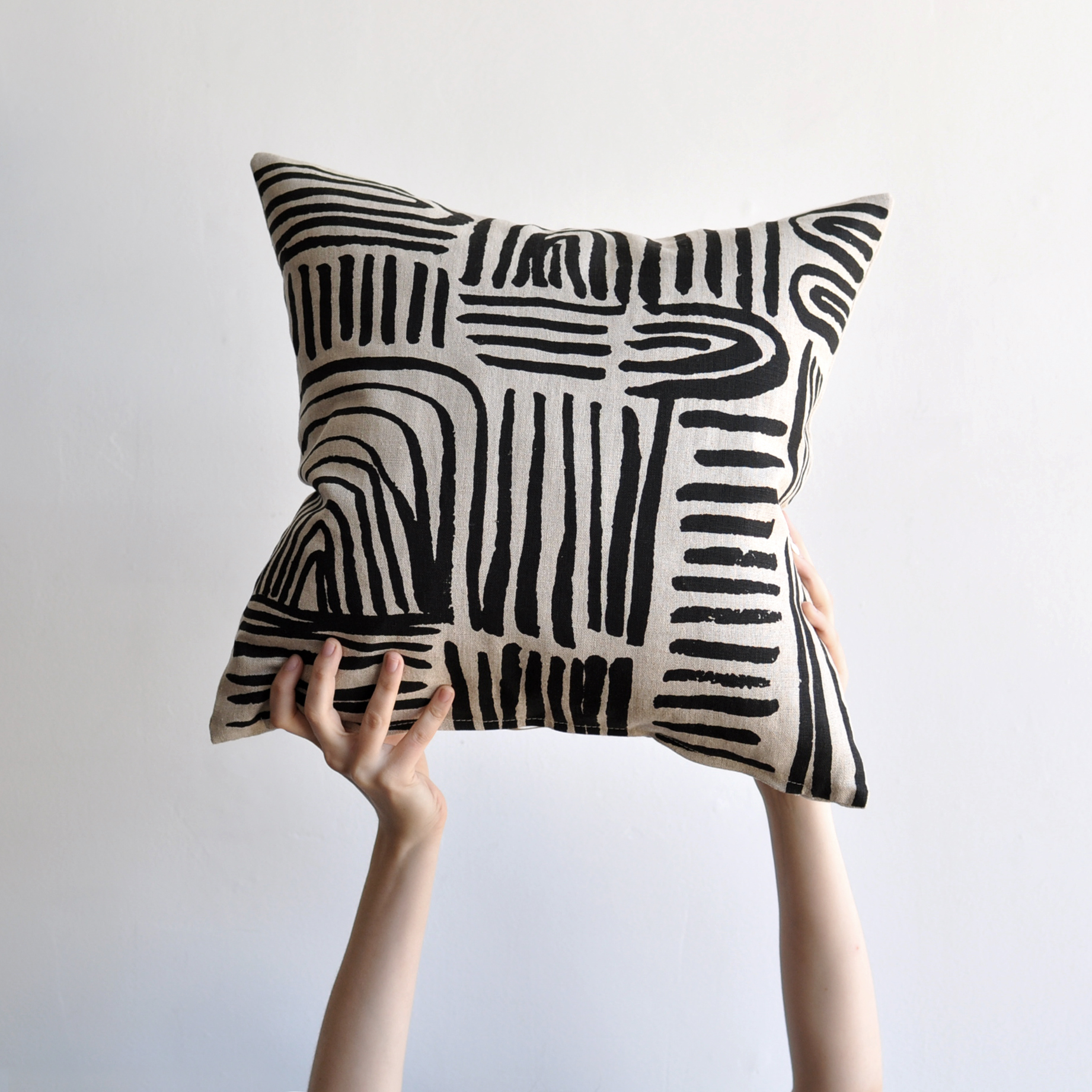
Describe your work process…
I spend portions of the day doing a number of different things – production work, designing new items, painting botanical samples that might become pattern elements, etc. I also like to keep busy doing a number of projects at the same time with different materials and methods, sometimes painting, sometimes sewing, weaving or punching. But it never seems that I’m doing different things – they all contribute and inform each other. Ultimately, my work process is very intuitive. While I do sketch ideas, I don’t really plan things out ahead of time in a traditional way. I use my discoveries to help build a final product.
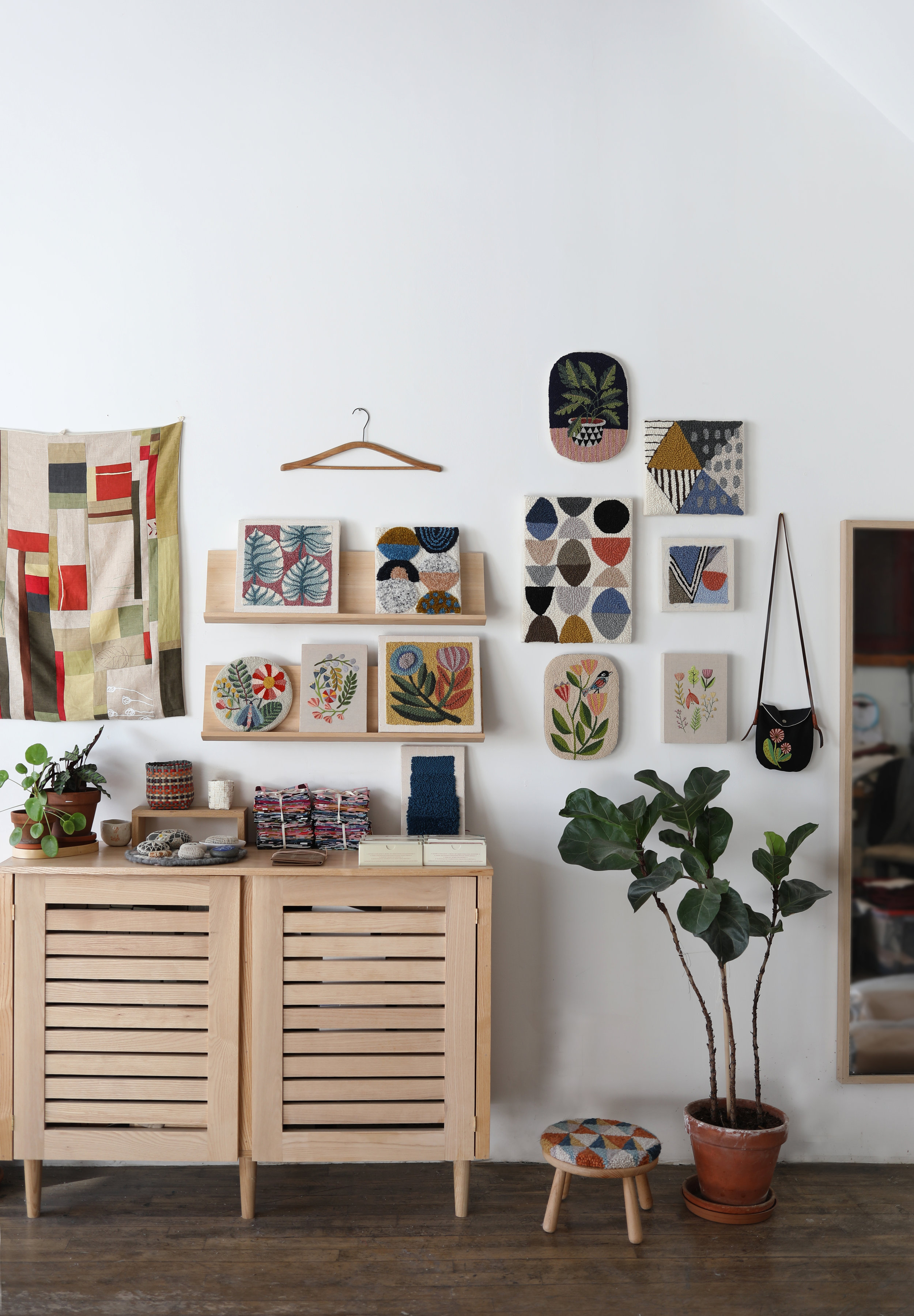
What sort of space do you work in?
We live and work in a Victorian storefront which we have renovated several times to suit the needs of work – both business and personal- and family life. We wanted to have a collection of spaces where we could do anything we wanted – a showroom in the front, a busy production area for sewing, cutting, printing and shipping, as well as more private studio spaces for quiet work and for wood working. Because we see our work as interconnected and we wanted our kids to grow up in a working studio that they could use as well, our building grew into a place of zones all connected to each other.
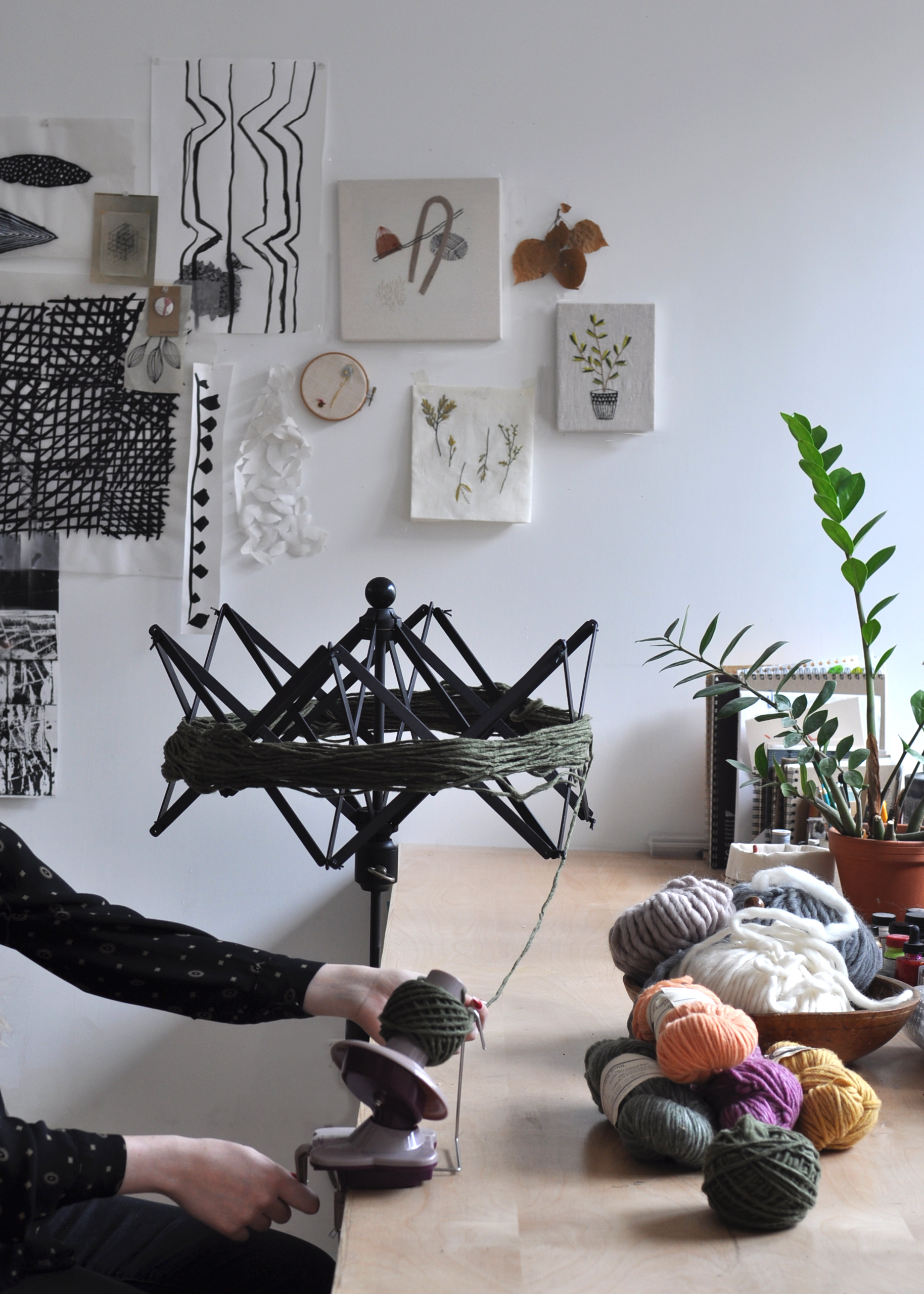
Tell us about your neighbourhood…
We are located in downtown Toronto on a relatively quiet stretch of Dundas Street West, filled with mom and pop shops, restaurants and loads of coffee. The best part of our location is that it’s situated in the middle of a number of great neighbourhoods – Trinity Bellwoods Park, Kensington market and Chinatown, as well as both College Street to the north and Queen to the south. We have a car, but rarely use it because we walk everywhere. It’s a pretty diverse neighbourhood so it has a mix of everything and everybody. It’s a great place to live and work.
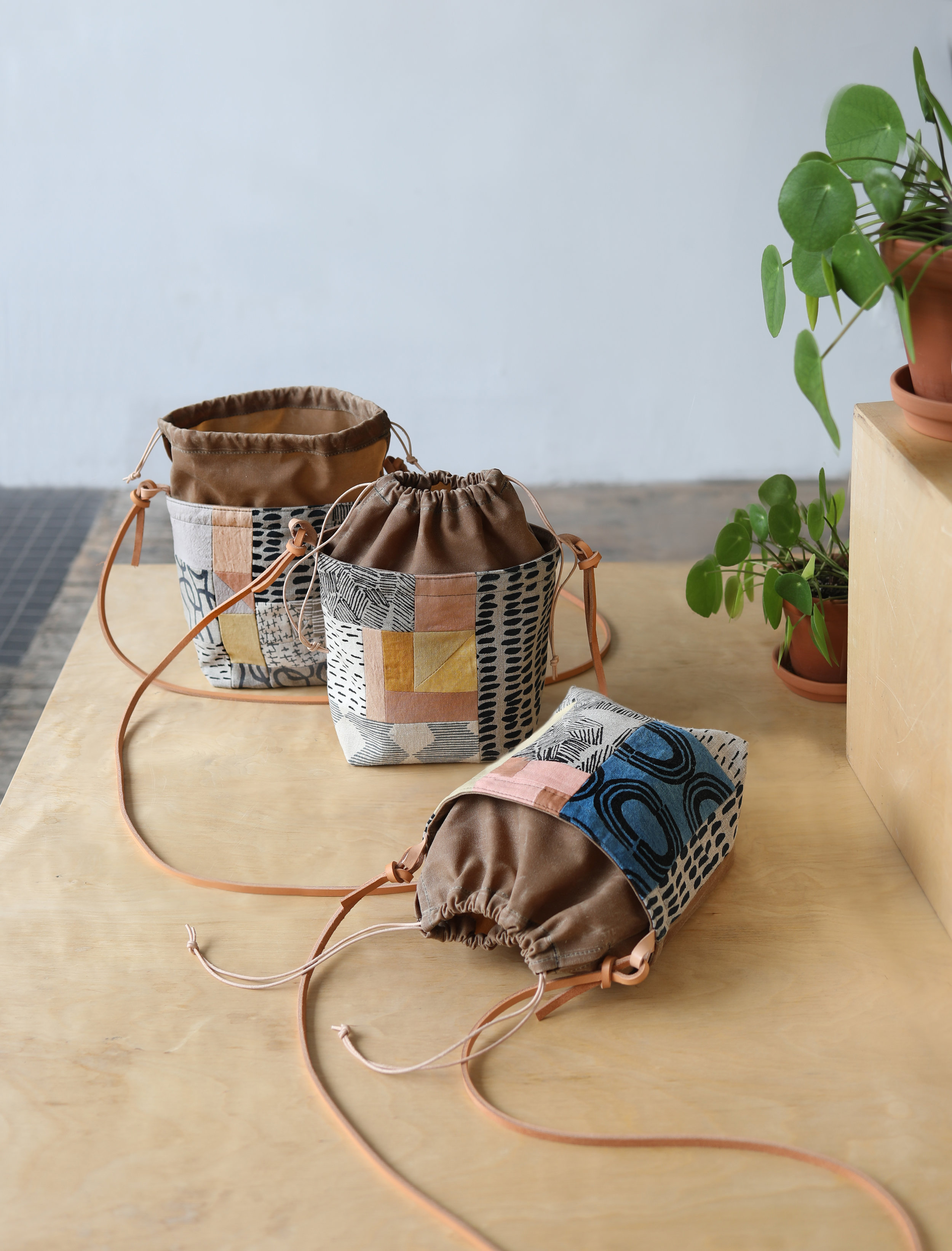
Do you have a design background, or are you self-taught?
I’d say yes to both. My background is in fine arts, majoring in sculpture and ceramics, but a lot of the textile work that I do is in many ways self-taught. I love collecting new techniques and trying new things, which I happily dive into, figuring it out with a hands-on approach. I think it’s an advantage for me to work this way because it allows me to work both correctly and incorrectly – which is a positive when I can incorporate my own way of thinking into a technique or material.
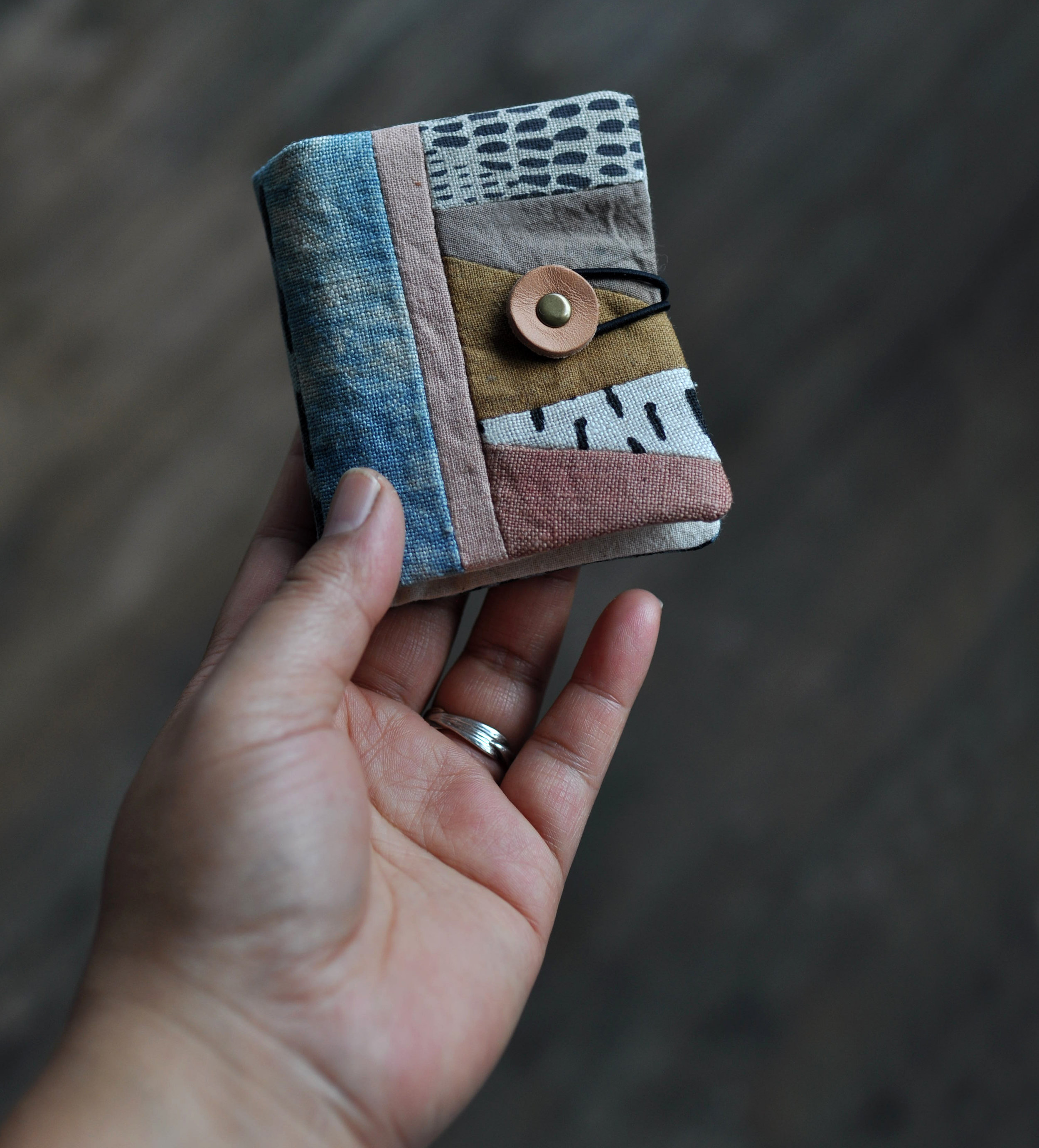
Has your work evolved since you began?
I feel that my work has similarities to what I’ve done in the past – similar materials and interest in botanical elements – but I think I’ve developed from presenting them as singular motifs and images into more complex patterns. Learning about patterns has been a long process, and establishing a balance between a repetition of form that is both structured and organic is key to my work. One consistent element for that balance is that I continue to draw everything by hand and arrange elements intuitively. And, of course, another difference over time is that I feel things have become more refined.
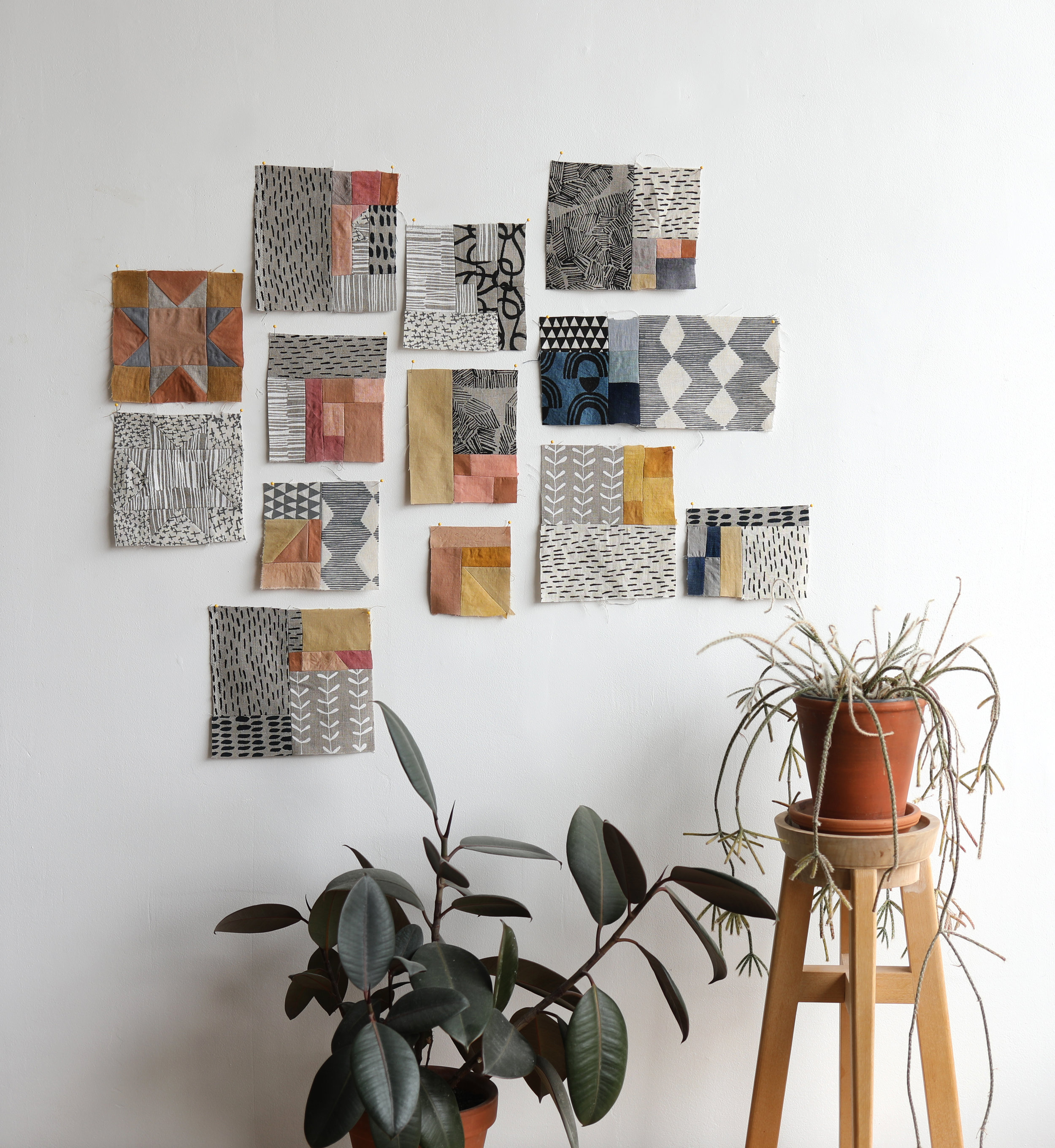
How do you balance producing handmade works, with the online world?
The online world can be demanding, and balancing that demand with the concept of handmade, small production is sometimes difficult, if not impossible. But since I can only produce so much of most items, it forces you to find ways to increase production, and keep the work fresh and accessible while still keeping a connection and quality to your work. But challenges aside, the relationship between handmade and online is completely interconnected, and I’ve found ways to use social media as a way to introduce new ideas and groups of work in numbers that are manageable. I can gauge how I should move forward on a piece by incorporating the response for a product into the process. Social media also allows me to show my work process as part of a larger narrative that our customers enjoy.
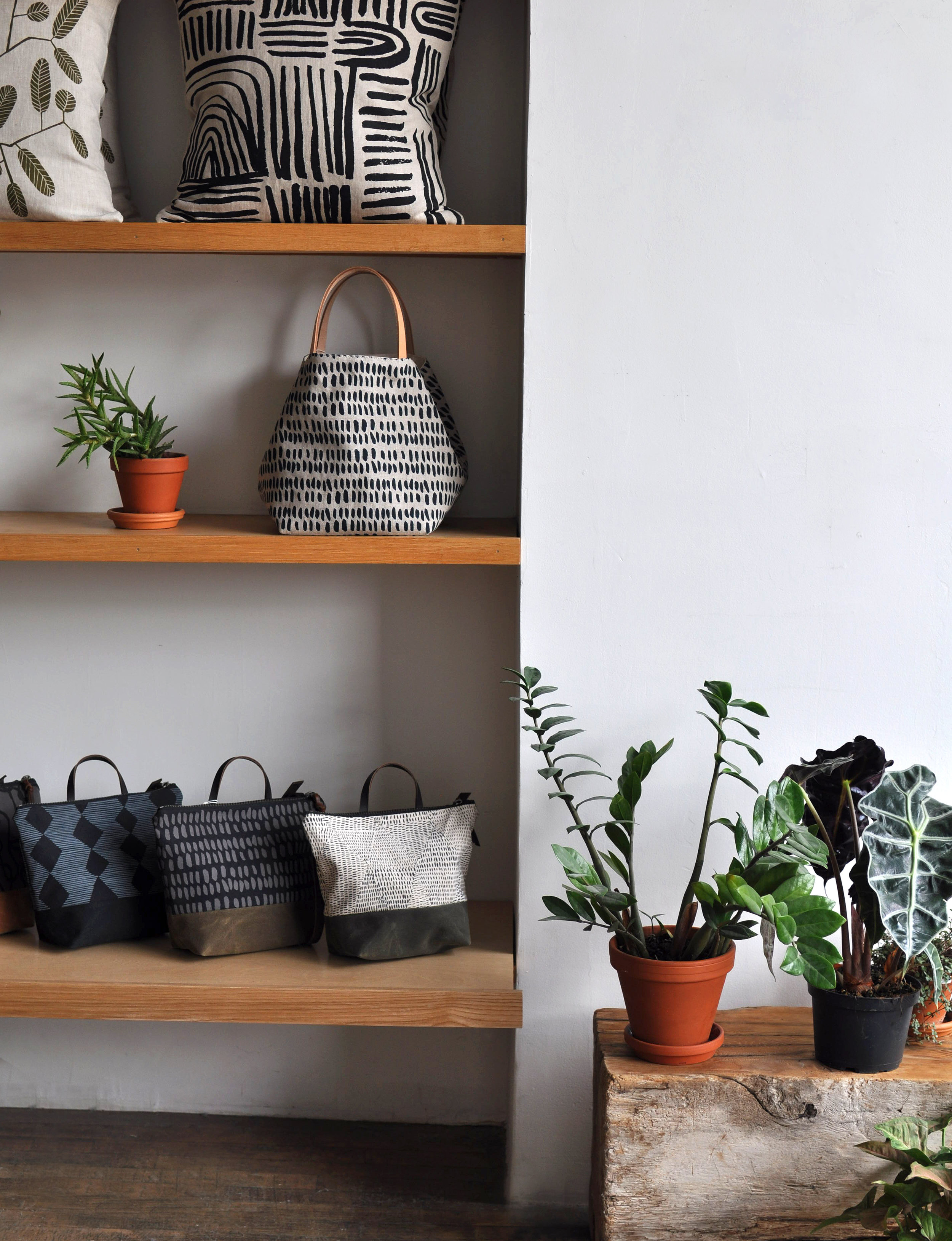
How important is the online community to your work?
I think it’s very valuable, and I feel that it has helped elevate our business in so many ways – the most obvious being connections to customers. But being connected to other makers, sharing ideas, and promoting each other’s work lets you build a network that goes well beyond just marketing – it reminds you that you are sharing with actual people, places and cultures.
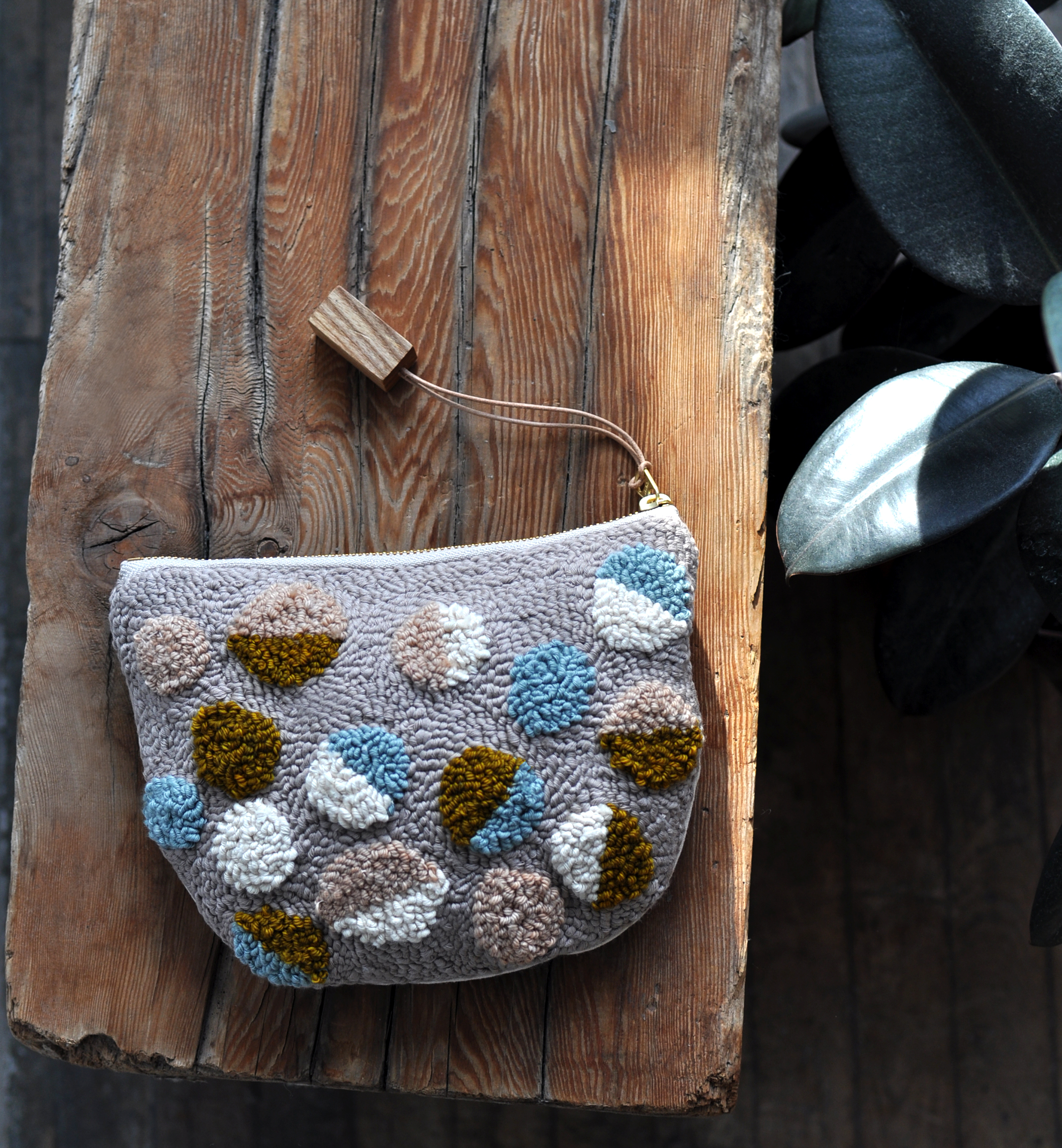
Where do you find creative inspiration?
From my surroundings – it can be a plant that catches my attention while walking in the neighbourhood, the texture of an old wall, or a shadow cast on the ground. We collect lots of little botanical samples and love the accidental marks that come along with any process. Inspiration is all around me and the key is to be able to interpret what I see.
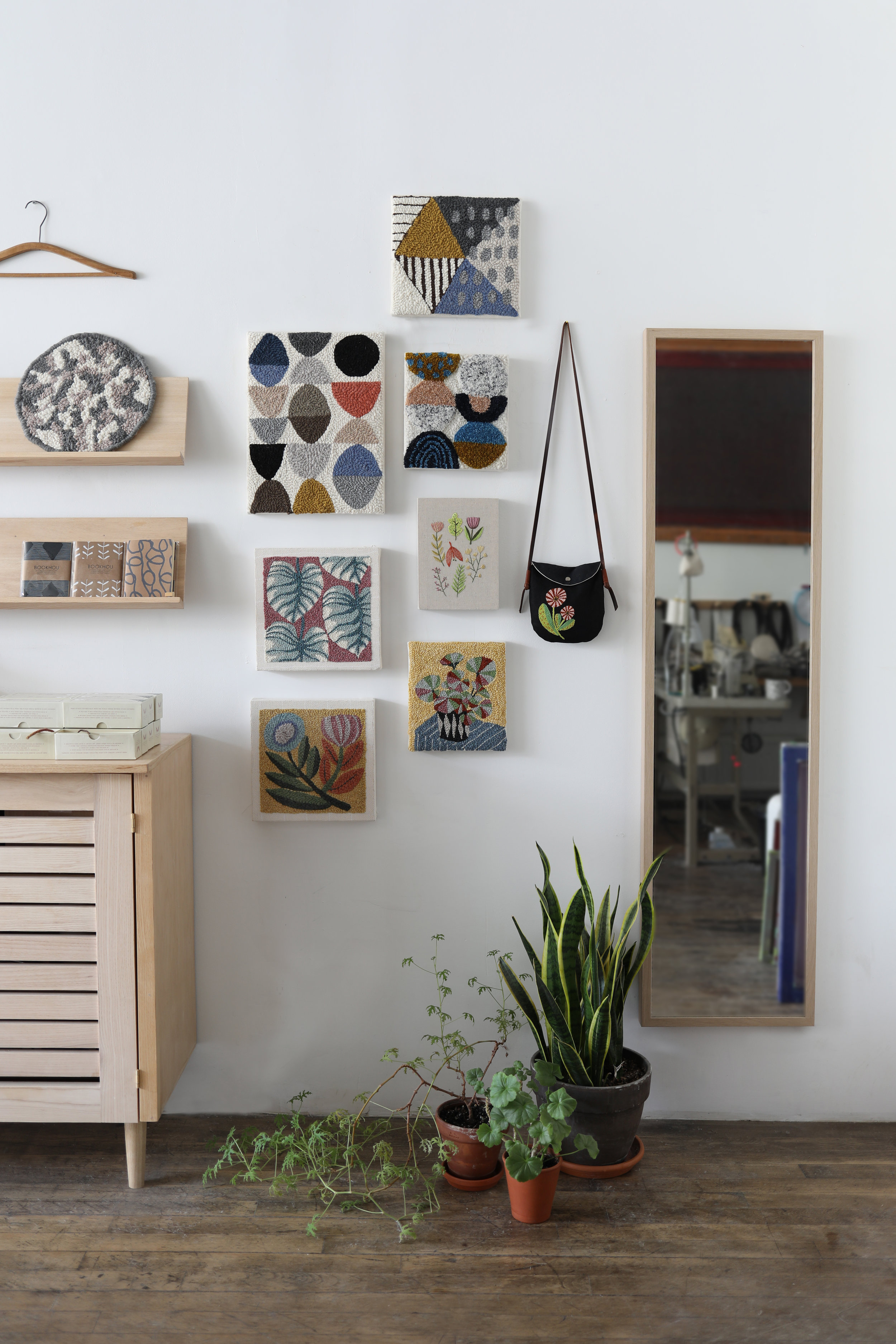
What are the highs and lows of working an independent maker?
I so enjoy working as an independent maker. The best thing is that I have full control of what I’m doing. I decide what I want to pursue based solely on what I find interesting, without concern for things like trends. In terms of production, the challenge I have is trying to make enough work to keep up with demand and keep the work interesting for myself but also manageable in scale. Typically, I rotate patterns that are available or play around with new combinations or bag designs. But in the end, I can present my work with a consistent theme and aesthetic that I feel comfortable with and that I can honestly say comes from my hands.
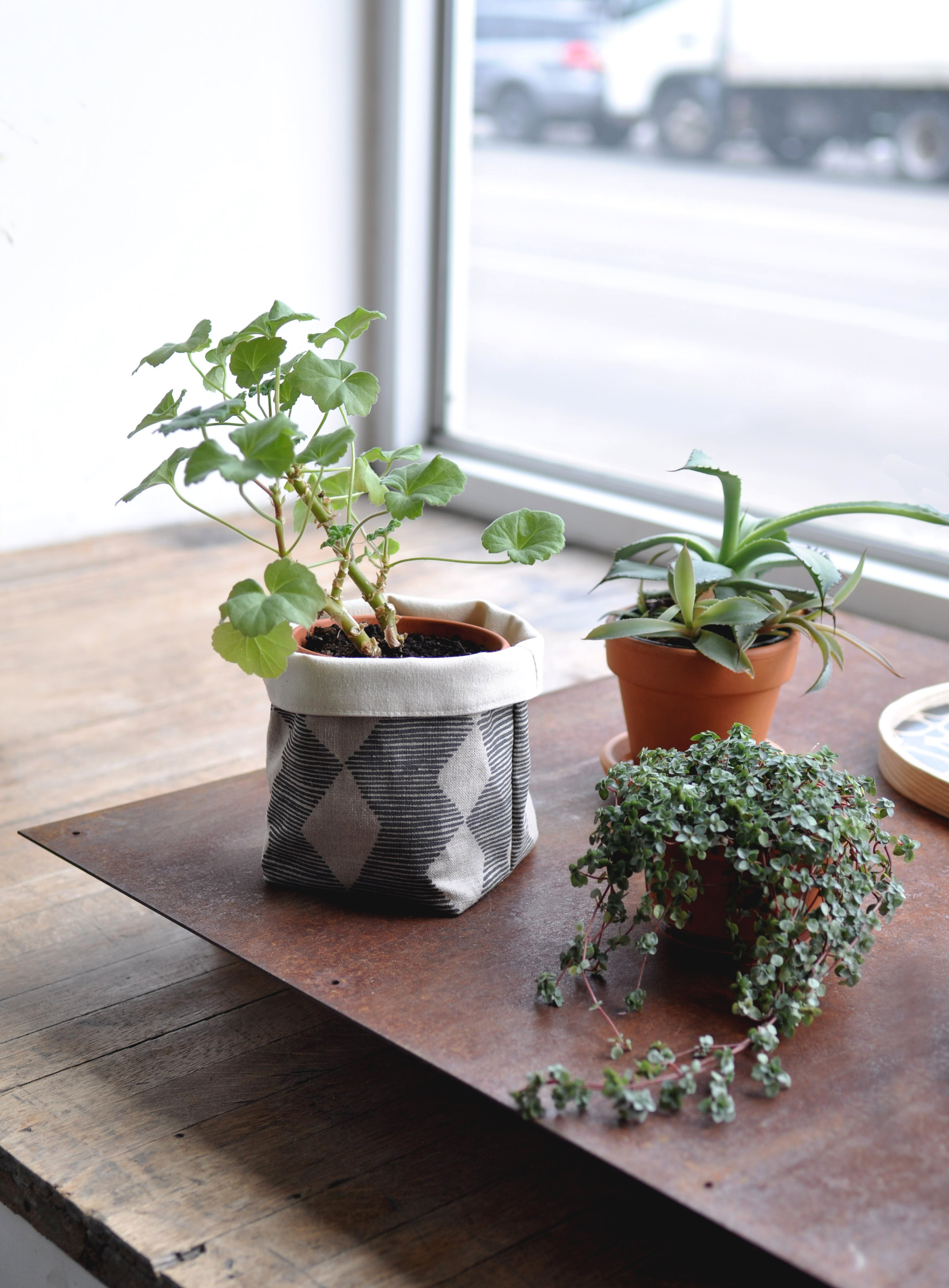
Which pieces do you most enjoy making?
I really enjoy drawing and embroidery, both of which I find closely related. Not only do they let me explore the motifs and compositions that I enjoy in a very intimate way, but I think they help me to slow down and the slower task makes it very meditative.
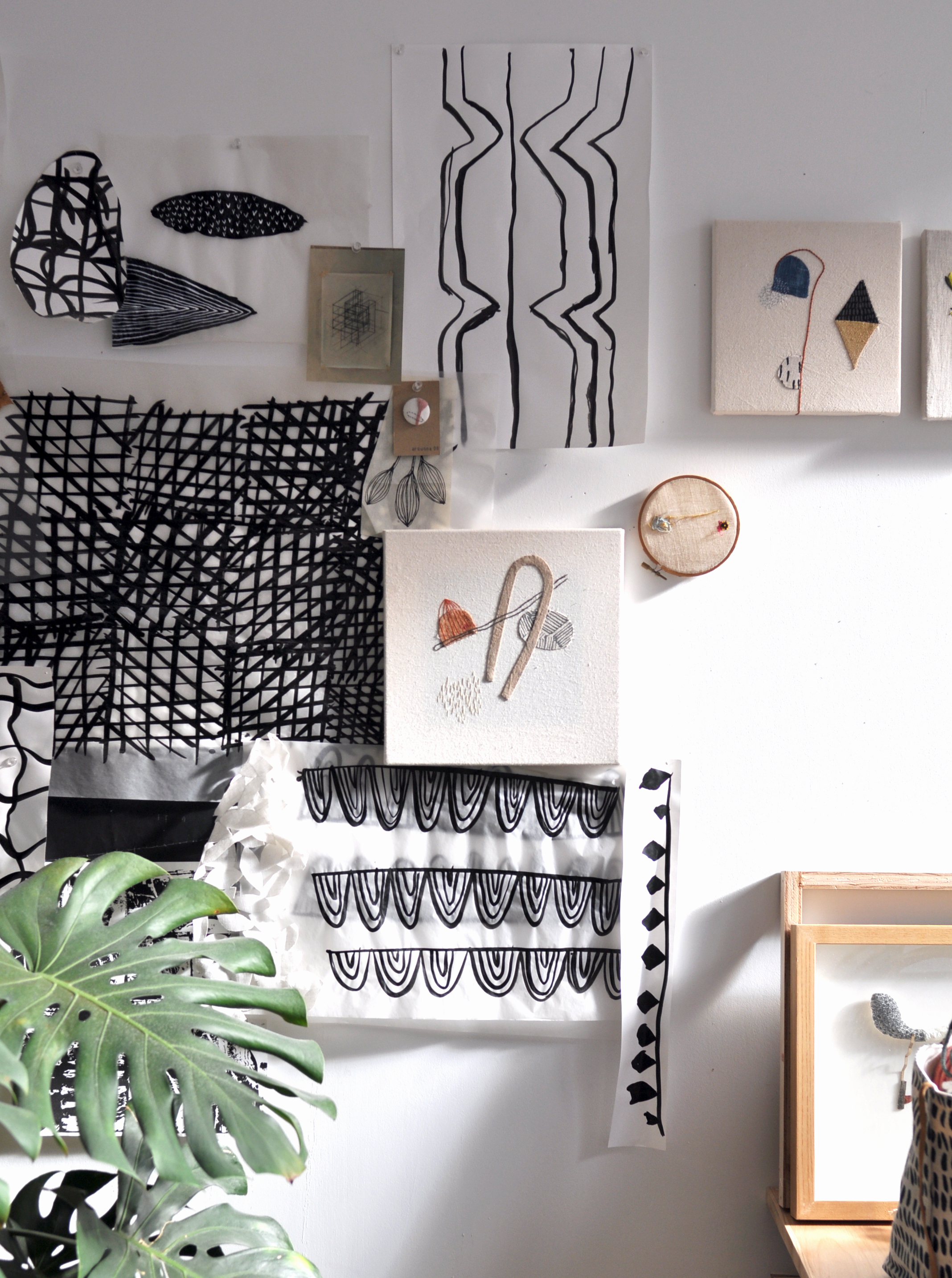
How did you first discover your love for what you do?
I have always been a maker and knew at a young age that I would spend my life making. I was part of a family of immigrants that made many of the things we needed – clothing, decorative things, furniture, and of course food. Making those things as a child, I think made me appreciate processes such as the slow accumulation of stitches that show fibre work as an art, as well as craft. Going off to art school and then opening a craft studio was really the only I thing I could do.
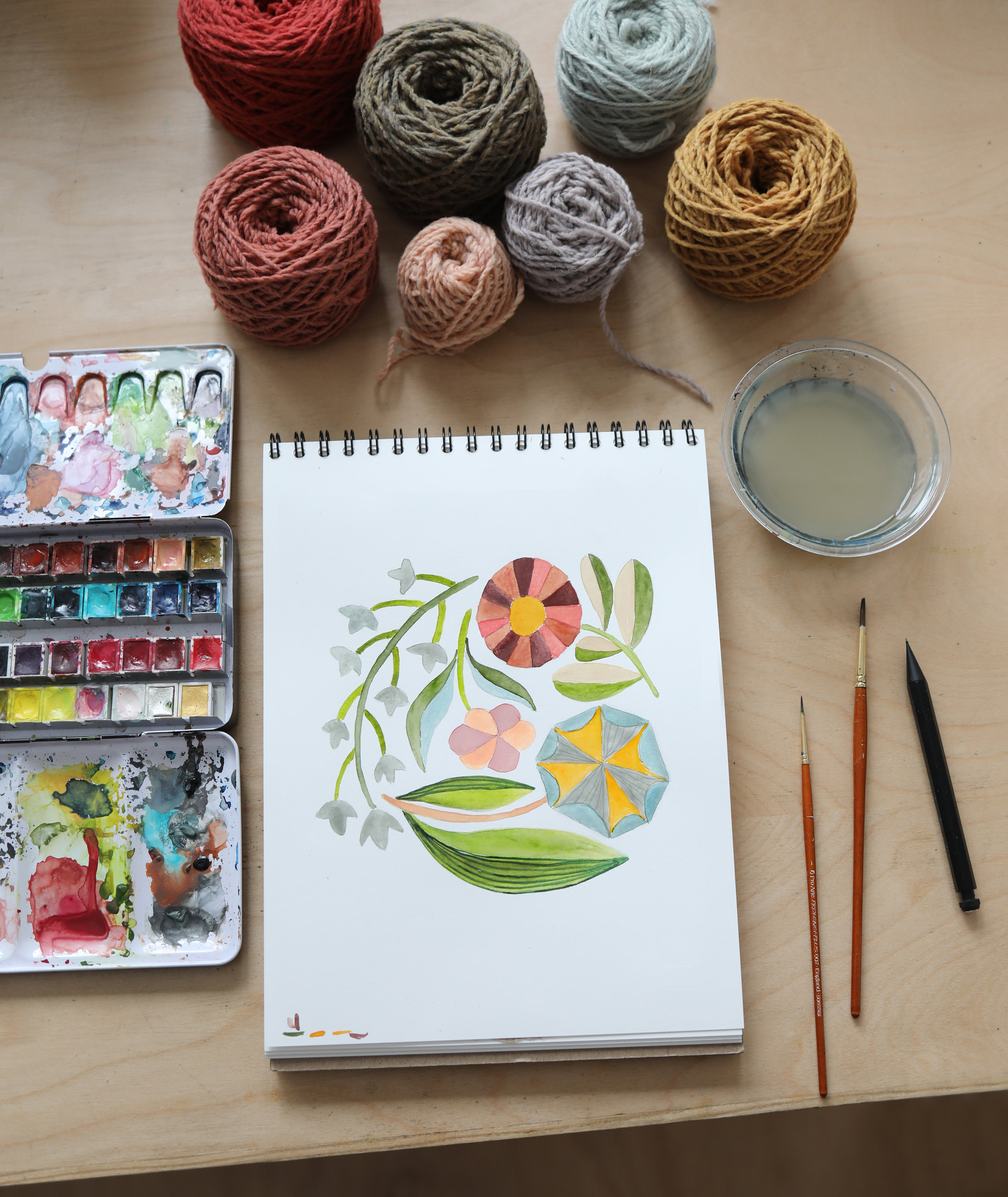
Do you have creative pastimes or hobbies?
I enjoy things I can do with my family like going for after dinner walks, and movie nights at home – as long as I can embroider while I watch!
Describe your working day…
I start the day checking emails and looking at orders, to see what needs to be fulfilled and made. Depending on the day, there is usually a production schedule to keep items in stock and contact suppliers for materials we use. Equally important work every day includes photographing projects and posts for Instagram. If I have a little time, I try to spend a while in a quiet space to work on some long term projects, such as punch needle work, or doing a few lines of weaving.
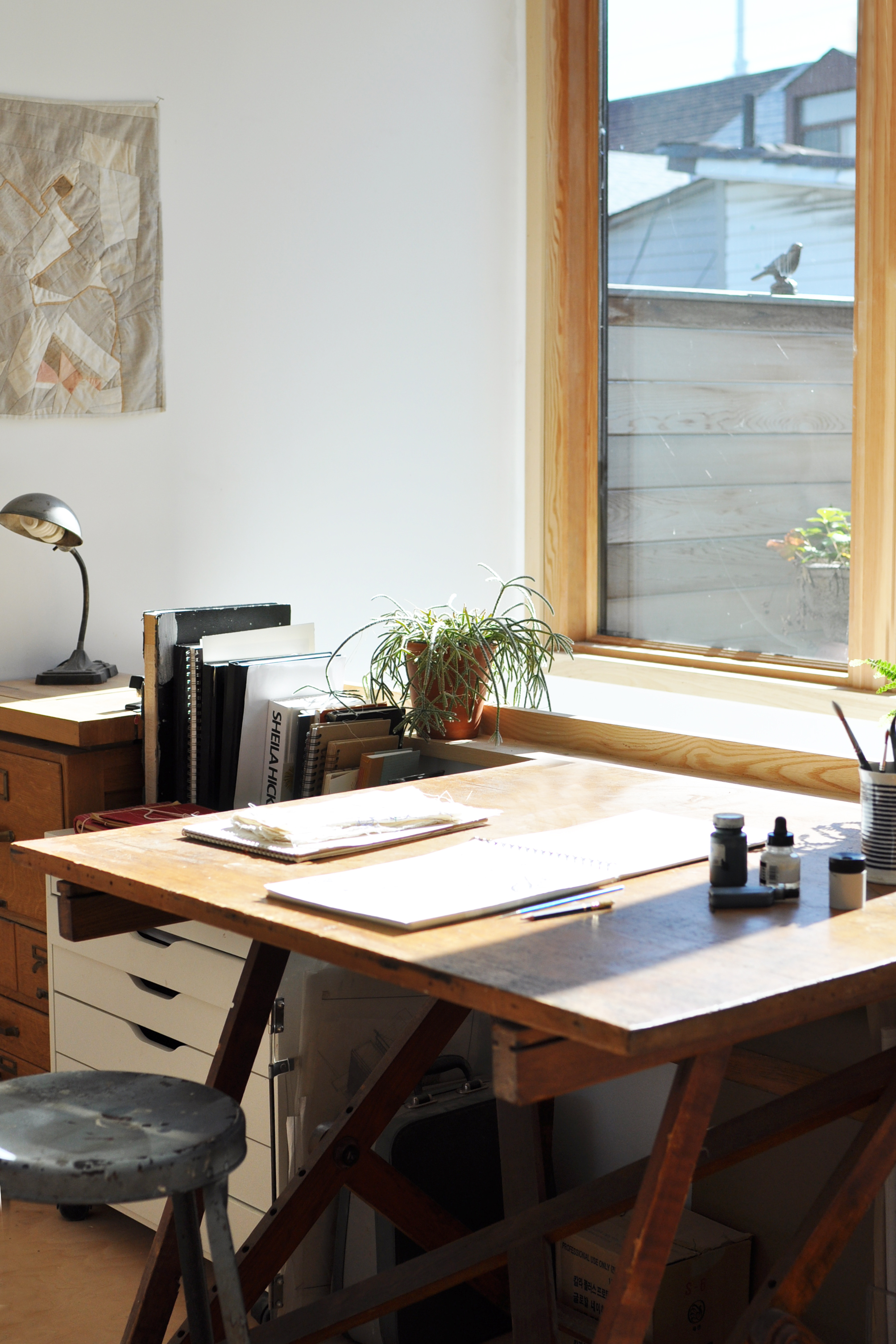
How do you approach marketing and PR?
We have never paid for advertising, but rather let our social media do the work of presenting our goods, workshop and events. It’s a lot of work keeping up with social media, and I place a lot of importance on every detail of a photograph or post and methods of presentation. But the benefits of social media are so important.
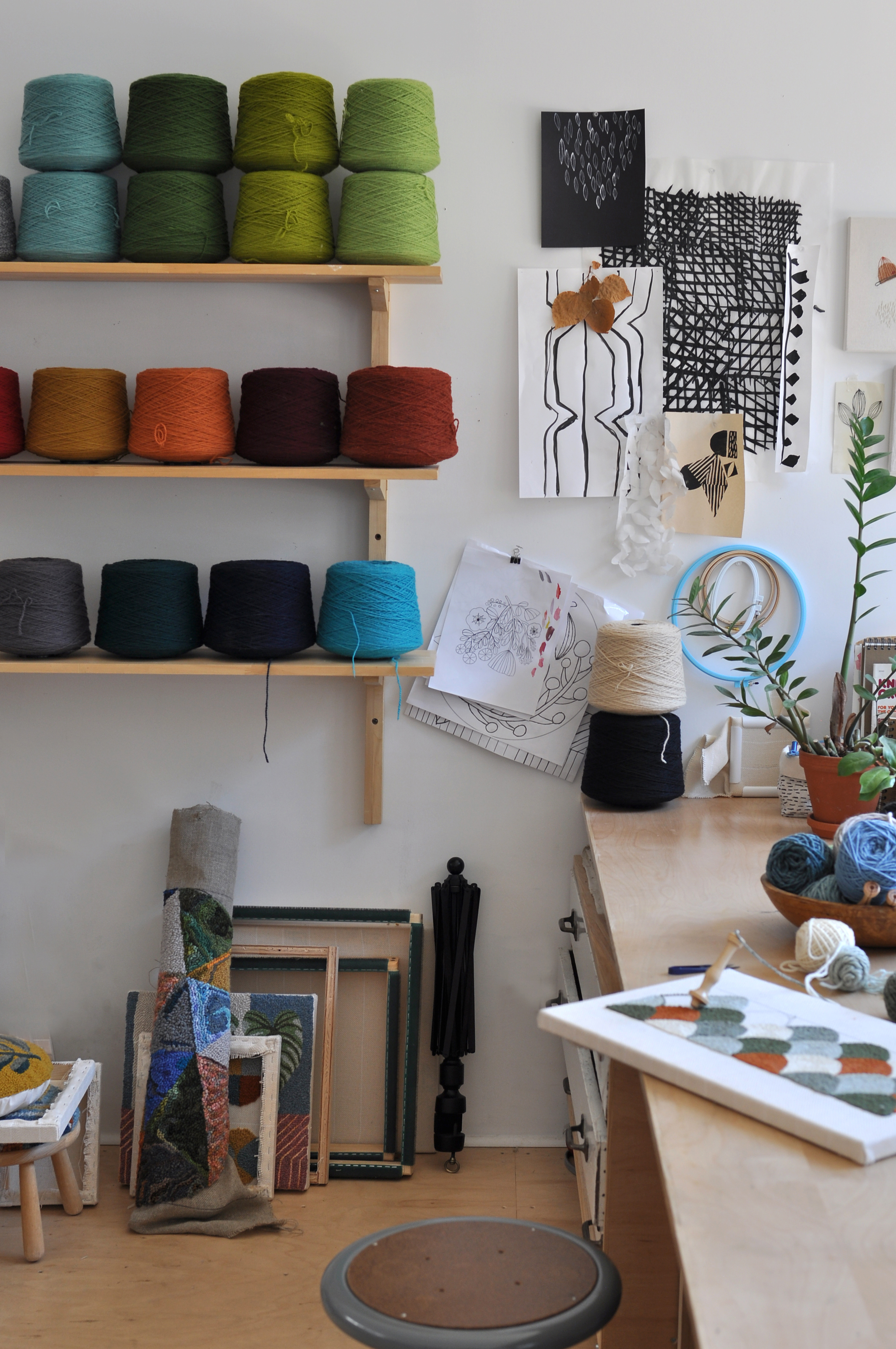
What have been your working highlights so far?
The simple answer is being able to make a living selling goods I make. More specifically, I think seeing everything come together after so much work and effort with my first book this last spring has been big. And seeing how it has been received has been amazing.
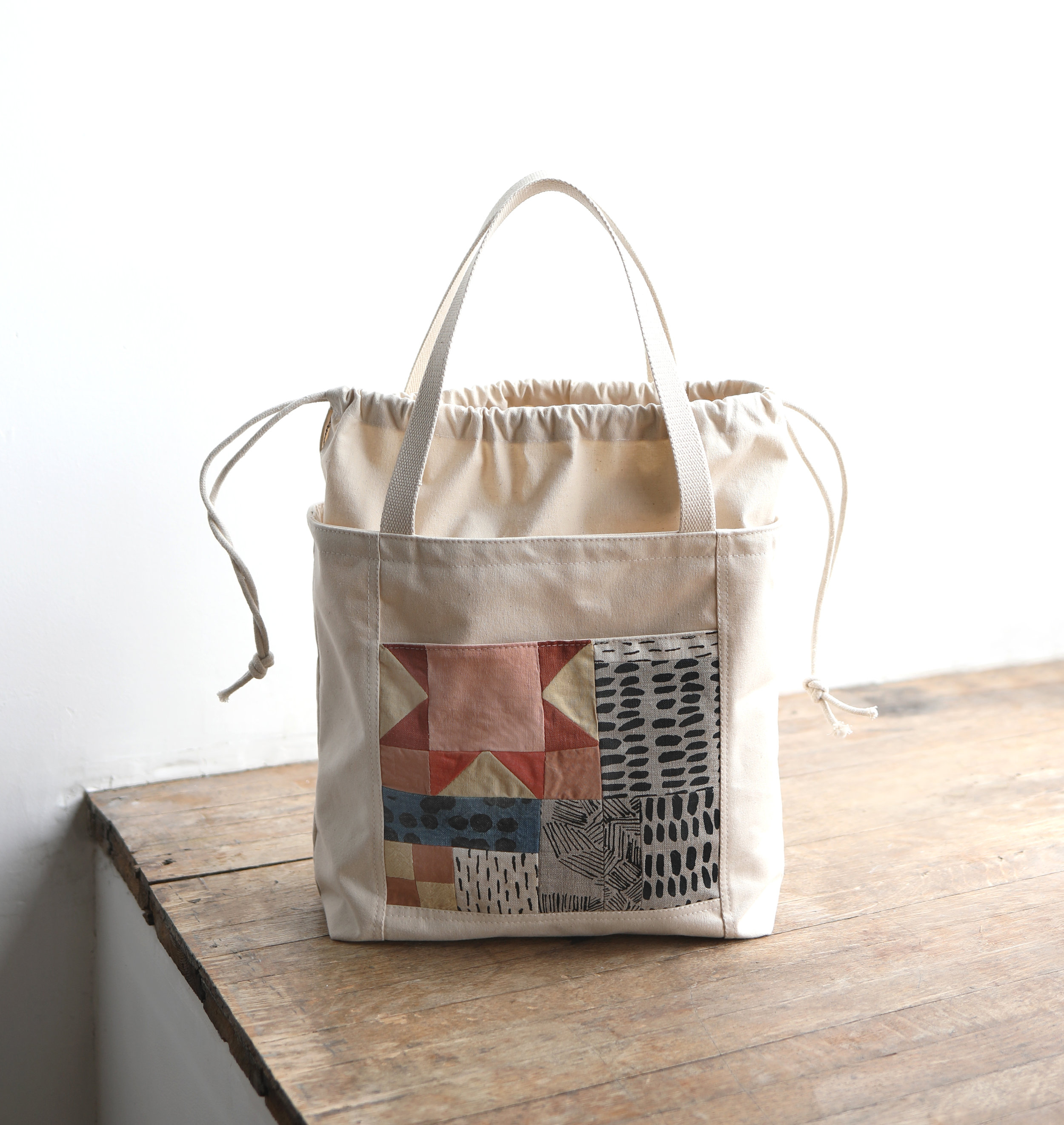
Where do you sell your work?
Early on we did many shows and markets as we could with a few vendors selling our goods in different cities. But now, it’s almost entirely retail, either from our brick and mortar shop or online store.
What do the next six months hold for you?
The most recent thing for me is the release of my book exploring punch needle. It’s being published in a number of languages, and I have a pretty busy travel schedule teaching punch needle workshops.
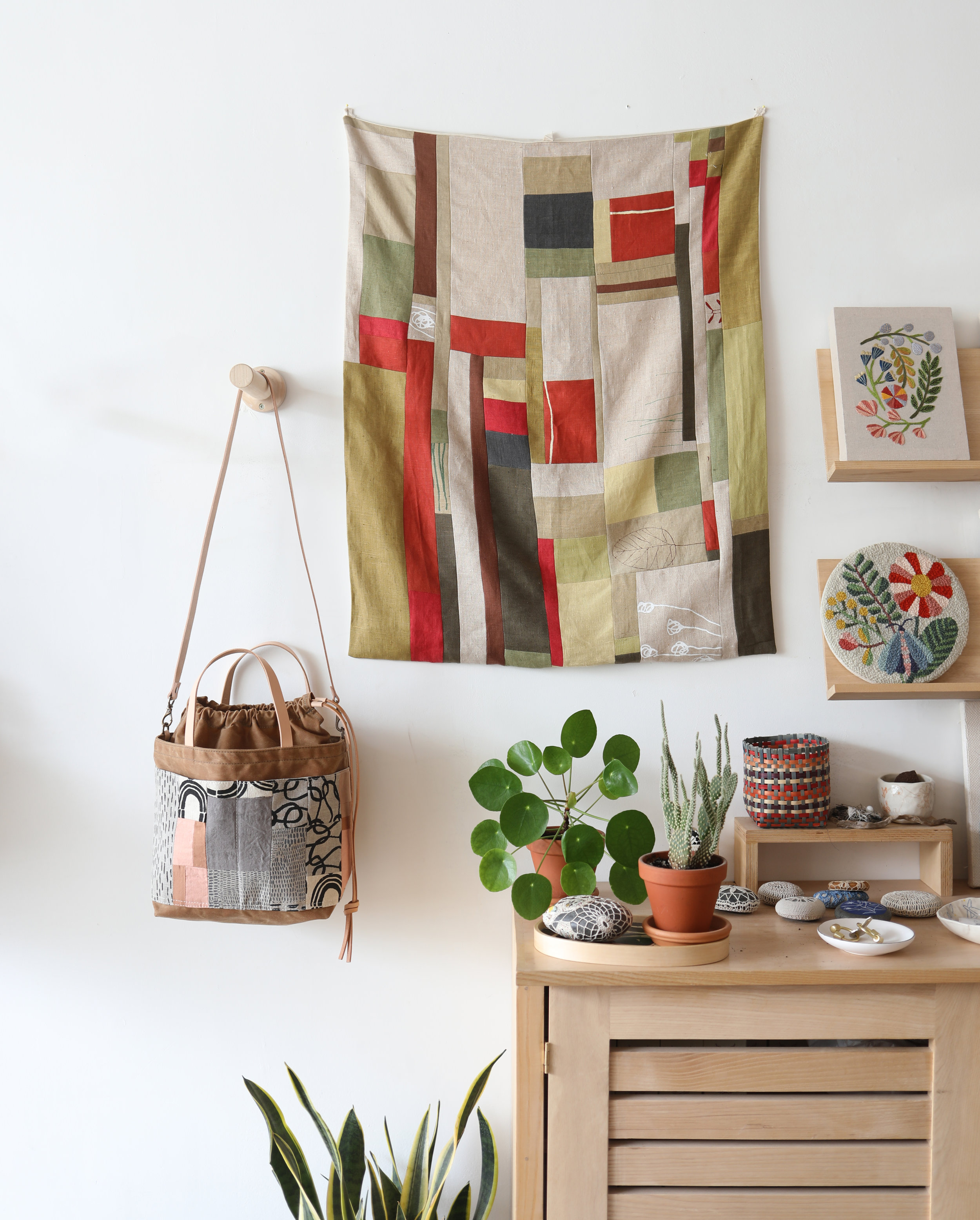
Any guidance for makers just starting out?
Work hard and don’t focus on what others are doing. Go at your own pace and believe in yourself.
Quick-Fire questions:
Describe your work in three words?
Handmade, minimal, natural
Tea or coffee?
Tea
Mountains or sea?
Mountains
Night owl or early bird?
Night owl
I wish someone had told me…
To not worry about making work that won’t work out – make mistakes, lots of them.
Find bookhou at 798 Dundas Street West, Toronto, Ontario, and online via their website and Instagram.
